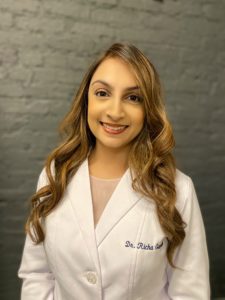December 6, 2019
Adult Scoliosis Types and Treatment Options
 Posted by Dr. Richa Gandhi
Posted by Dr. Richa Gandhi
Common Types of Adult Scoliosis and Treatment Options
Adult scoliosis is the presence of a lateral deviation in the spine which measures at a Cobb angle of 10 degrees or more in a skeletally mature patient. There are 2 common types of adult scoliosis:
Type 1: Adult Degenerative
Also referred to as Adult “De Novo” scoliosis is present in adults due to arthritis in the spine. This leads to vertebral body asymmetry which in turn causes an abnormal curvature of the spine. Most often patients present with back pain and joint stiffness. This type of curvature is most commonly located in the lumbar spine (low back).
Type 2: Adult Idiopathic Scoliosis
This curvature was present when the patient was an adolescent and has progressed into adulthood. You can think of it as a continuation of adolescent idiopathic scoliosis. Patients commonly complain of low back pain and stiffness, radiating pain down the leg and muscle fatigue. This type of curvature is most commonly located in the thoracic spine (upper back) and lumbar spine (low back) and can be shaped like an S-curve or C-curve.
Treatment Options
Non-operative:
The goals of non-operative treatment for adult scoliosis is to provide pain relief and strengthen core and spinal muscles to improve overall function and quality of life. This can be achieved through:
-Bracing
-Exercises
-Nutrition
Operative:
Surgery should be considered if non-operative treatments have been unsuccessful or for severe cases which will not respond well to conservative treatments.